Have you ever seen a negative voltage reading on your multimeter and wondered what it meant? Don’t worry, you’re not alone. This is a common question that many people have, and it can be confusing to understand at first. In this article, we will explain what negative voltage means and provide some tips on how to interpret the reading. We will also discuss some of the potential causes of negative voltages and how to troubleshoot them.
What Does a Negative Voltage on a Multimeter Mean?
It is essential for electricians, engineers, and hobbyists who work with electrical circuits.
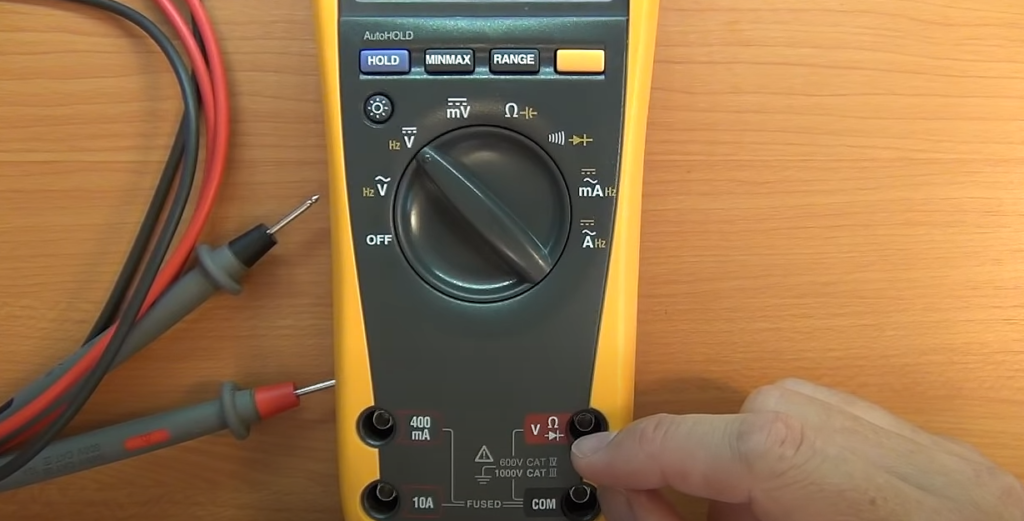
A multimeter has two leads, one red and one black. The leads are connected to the probes on the multimeter. The red lead is connected to the positive probe, and the black lead is connected to the negative probe. So as you can see, polarity matters when using a multimeter.
When you’re using a multimeter to measure voltage, you’ll normally see a positive number. However, in some cases, you may see a negative number. So what does this mean?
A negative voltage on a multimeter simply means that the polarity of the voltage is reversed. In other words, the positive lead is connected to the negative terminal of the circuit, and the negative lead is connected to the positive terminal.
This may seem confusing at first, but it’s actually quite simple. Just remember that the red lead is always connected to the positive probe, and the black lead is always connected to the negative probe. However this is just one of the possible reasons. [1], [2]
What Could Influence Negative Voltage Result on a Multimeter
So what could influence the result and show a negative voltage on a multimeter? As we have seen, one possibility is that the leads are switched. However, there are other factors that could influence the result.
There’s a break in circuit’s wire
A break in the circuit’s wire is one of them. If you have a multimeter that beeps when there is a break in the circuit, then this is likely what has happened. The break could be at any point in the circuit. All it takes is for a single strand of wire to be cut or frayed and you will get a negative voltage reading. This is because there will be no continuity between the two points that you are testing. If you get a negative voltage reading, then check all of your connections and look for any breaks in the wires.
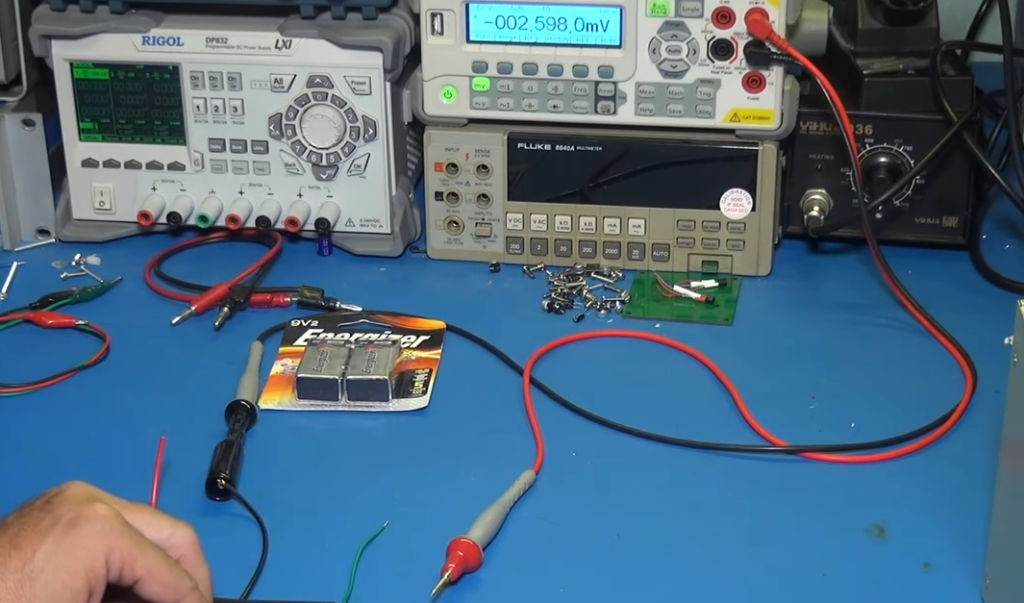
Measured voltage is negative relative to ground
Another possibility is that the measured voltage is negative relative to ground. To understand this, you need to know what ground is.
In an electrical circuit, ground is a reference point. It’s the point where all voltages are measured from. So if the measured voltage is negative relative to ground, it means that the voltage is lower than 0 volts.
This can happen if the circuit you’re measuring is not properly grounded. In this case, you’ll see a negative number on the multimeter.
There’s a short in the multimeter
Sometimes circuits might not be the one to blame for a negative voltage reading on your multimeter. If you’ve been using a multimeter for a while, you might have come across the following problem: everything seems to be set up correctly, but there’s still a negative voltage reading on the screen. In such cases, it is very likely that there’s something wrong with the multimeter itself. One of the most common causes is a short in the multimeter.
If there’s a short in the multimeter, it will show a false negative voltage reading on the screen, regardless of what you’re measuring. This problem is not always easy to spot, but it can happen.
Voltage is out of range
The most common error is that the voltage is out of range. This means that the multimeter can not measure such high or low values. The best solution in this case is to use a different scale or, if available, an auto range function.
Usually setting the voltage to either minimum or maximum (depending on the situation) will give you an accurate reading. [1], [2]
What Happens if the Voltage is Negative?
Now that we know what could influence a negative voltage reading on a multimeter, let’s take a look at what happens if the voltage is actually negative.
In most cases, nothing will happen. The multimeter will simply show a negative number on the screen. However, if the cause is complex, the negative voltage could be pretty bad.
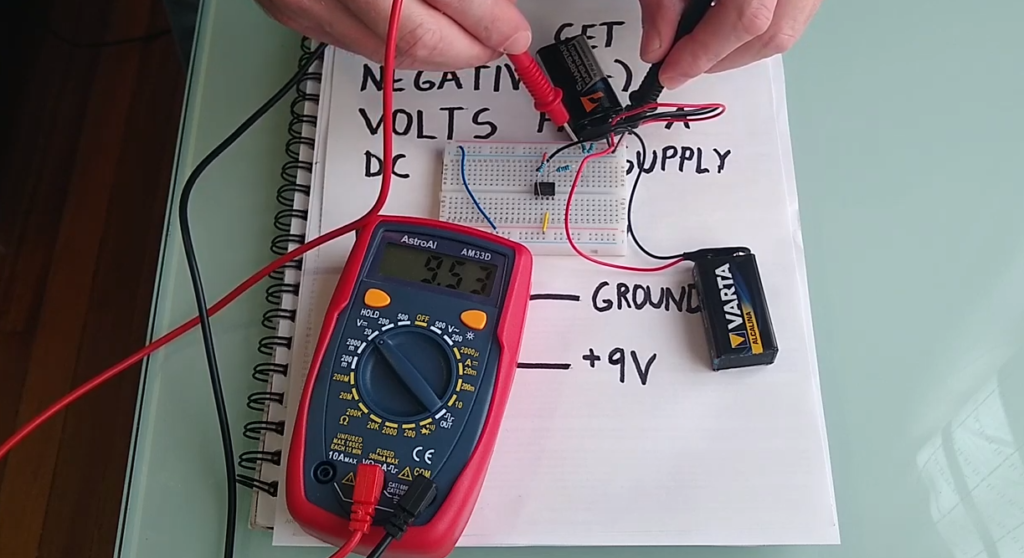
Negative voltage in the circuit itself, means that the voltage is flowing in the wrong direction. This can cause all sorts of problems, such as damage to electronic components or a fire. [1]
What Should You Do if You Notice a Negative Voltage Reading
So as you can see, there are quite a few things that could go wrong and give you a negative voltage reading on your multimeter. But what should you do if you notice a negative voltage reading?
Check the leads
The first thing you should do is to check the leads. As we’ve seen, one of the most common reasons for a negative voltage reading is that the leads are switched. So before doing anything else, make sure that the red lead is in the positive (VΩ) socket and the black lead is in the ground (COM) socket.
If this doesn’t fix the problem, then check all of your connections. Make sure that there are no loose wires and that all of the connections are secure.
Additionally ensure that you’re touching the correct wires with the leads and the polarity is matched correctly. If everything looks good and you’re still getting a negative voltage reading, then it’s time to move on to the next step.
Check the condition of your multimeter
The next thing you should do if you notice a negative voltage reading on your multimeter is to check the condition of your multimeter.
You may want to calibrate your multimeter if you think that it is not giving accurate readings.
Check the condition of the equipment you are testing for damage
If you are testing equipment and you notice a negative voltage reading, make sure to check the condition of the equipment as well. If there is any visible damage, it could be the cause of the negative voltage reading.
Select the proper ranges when testing
If you are testing for DC voltage, make sure that your multimeter is on the DC voltage setting. If you are testing for AC voltage, make sure that your multimeter is on the AC voltage setting.
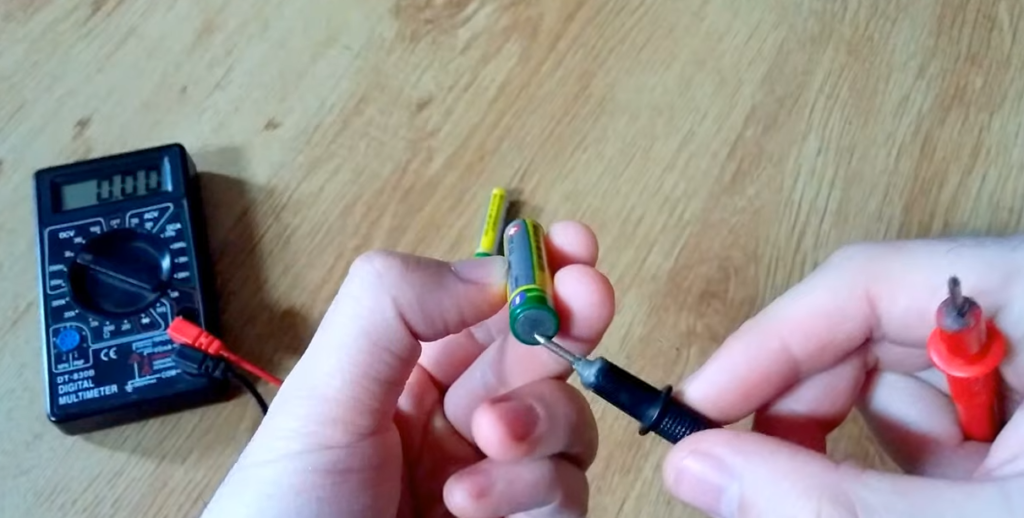
Additionally, make sure that you are using the proper range for the voltage that you are testing. For example, if you are testing a circuit that has a maximum voltage of 12 volts, make sure that your multimeter is in the 20 volt range. Selecting the range that is lower than what you are testing will give you a more accurate reading. [1]
How to Correctly Measure DC Voltage With a Multimeter
As you can see, there are a few things that can go wrong and give you a negative voltage reading on your multimeter. So it’s important to understand how to properly measure voltage using a multimeter. We will start with DC voltage.
More often than not, you will want to measure DC voltage when testing batteries, solar panels, or other devices that use DC power.
Plug leads properly
Assuming you are using a digital multimeter, the first thing you need to do is make sure that you plug the leads into the proper ports. The black lead should be plugged into the COM (common) port. The red lead should be plugged into the VΩmA port.
Set the multimeter to DC voltage mode
Next, you need to set your multimeter to DC voltage mode. This is usually done by turning the dial to the V with a straight line above it. Some multimeters will have a separate port for DC voltage measurements.
Connect the leads to the proper terminals
Now you need to connect the leads to the proper terminals. The black lead should be connected to the negative terminal. The red lead should be connected to the positive terminal. This way, the current will flow through the multimeter in the proper direction and you will get an accurate reading. This step is especially important when measuring a DC voltage source, such as a battery, because the polarity of the voltage directly affects the readings.
Take the reading
Once you have everything set up correctly, you can take the reading. The display on the multimeter will show you the voltage that is present between the two terminals. If you get a positive value, congratulations! You did everything correctly. As to whether this number is good or bad, that depends on the voltage source you are testing. [1], [2]
How to Correctly Measure AC Voltage With a Multimeter
Now let’s move on to AC voltage measurements. AC voltage is found in most household outlets, so it’s important to know how to measure it correctly. The set-up step is identical to measuring DC voltage so don’t worry about having to memorize something extra.
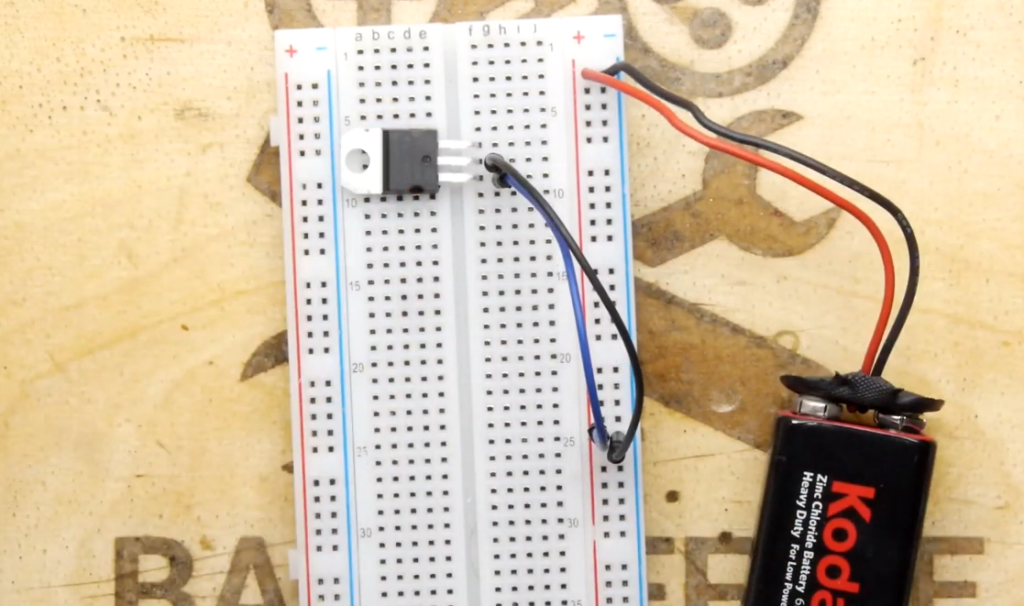
Set the multimeter to AC voltage mode
First, you need to set your multimeter to AC voltage mode. This is usually done by turning the same knob that you used to set the DC voltage mode. The only difference is that on most multimeters, the AC voltage mode is represented by a wavy line instead of a straight line.
Connect the leads to the proper sockets
Next, you need to connect the leads into the proper sockets of the outlet. Identify the polarity and touch the leads to the outlet’s terminals. The red lead goes into the positive terminal and the black lead goes into the negative or common terminal.
Note the reading
Once you have the leads connected properly, take note of the reading on the multimeter. If you did everything correctly, it should show you 0 or a positive voltage, depending on the type of test you’re performing.
Negative voltage on a multimeter simply means that the voltage in the circuit is below 0 volts. This can happen for a number of reasons, but as we mentioned, the most common cause is incorrect lead placement. Make sure that you double-check your lead placement before taking any further measurements. [1], [2]
FAQ
Is negative voltage the same as ground?
No, negative voltage is not the same as ground. Ground is a reference point from which all other voltages are measured. Negative voltage is simply a voltage that is lower than ground.
A negative voltage reading on your multimeter means that the circuit you are testing has a voltage that is lower than ground. This can be caused by a number of factors, including an open circuit or a short circuit.
Is voltage supposed to be negative?
No, voltage is not supposed to be negative. If you see a negative voltage reading on your multimeter, it means that the electrical current is flowing in the reverse direction from what you’re expecting. This can be caused by a variety of factors, including loose wiring, damaged components, or incorrect meter settings.
What is an acceptable voltage reading on a multimeter?
The answer to this question depends on what you’re trying to measure. For example, if you’re testing the voltage of a car battery, 12.6 volts is considered an acceptable voltage reading. However, if you’re testing the voltage of a AA battery, 1.5 volts is considered an acceptable voltage reading.
How to use a multimeter properly?
A multimeter is an essential piece of equipment for any electronics enthusiast. It allows you to measure voltage, current, and resistance with a single device. If you get a negative voltage reading on your multimeter, it could be because you aren’t using it properly.
To measure the AC voltage of an appliance, you must first set your multimeter to the AC voltage setting. Then, plug the black lead into the COM (Common) port and the red lead into the VΩmA port. Finally, touch the leads to the two wires coming from the appliance. Keep an eye on polarity! If you get a negative voltage reading, it means the current is flowing in the opposite direction to what you expected.
Useful Video: How to use a Multimeter for beginners: Part 1 – Voltage measurement / Multimeter tutorial
Conclusion
You decided to buy a multimeter to measure the voltage of your car’s battery. But when you hooked up the leads, the reading said a negative value. Does that mean your battery is somehow generating negative voltage?
The short answer is not always. The long answer has to do with how multimeters and voltage work. Usually, negative voltage reading is a sign you made a mistake when connecting the multimeter leads. Switching them around should give you a positive reading.
If you’re still getting a negative voltage reading after double-checking your connections, it could be because your multimeter is set to the wrong range. Check your multimeter’s manual to see if it can measure negative voltages and switch it to the right setting if so.
Negative voltage readings can also occur if there’s a break in the circuit you’re trying to measure. This usually happens if a wire is loose or disconnected. In this case, you’ll need to repair the break before you can get an accurate voltage reading.
As long as you make sure your multimeter is set to the correct range and your connections are secure, you shouldn’t have any trouble getting an accurate voltage reading. So don’t worry if you see a negative voltage reading on your multimeter – it’s probably not as bad as it looks!
Have you ever gotten a negative voltage reading on your multimeter? What did you do to fix it? Let us know in the comments below!
References
- https://electrouniversity.com/what-does-negative-voltage-mean-on-a-multimeter/#what-does-negative-voltage-mean
- https://www.skillcatapp.com/post/measuring-voltage





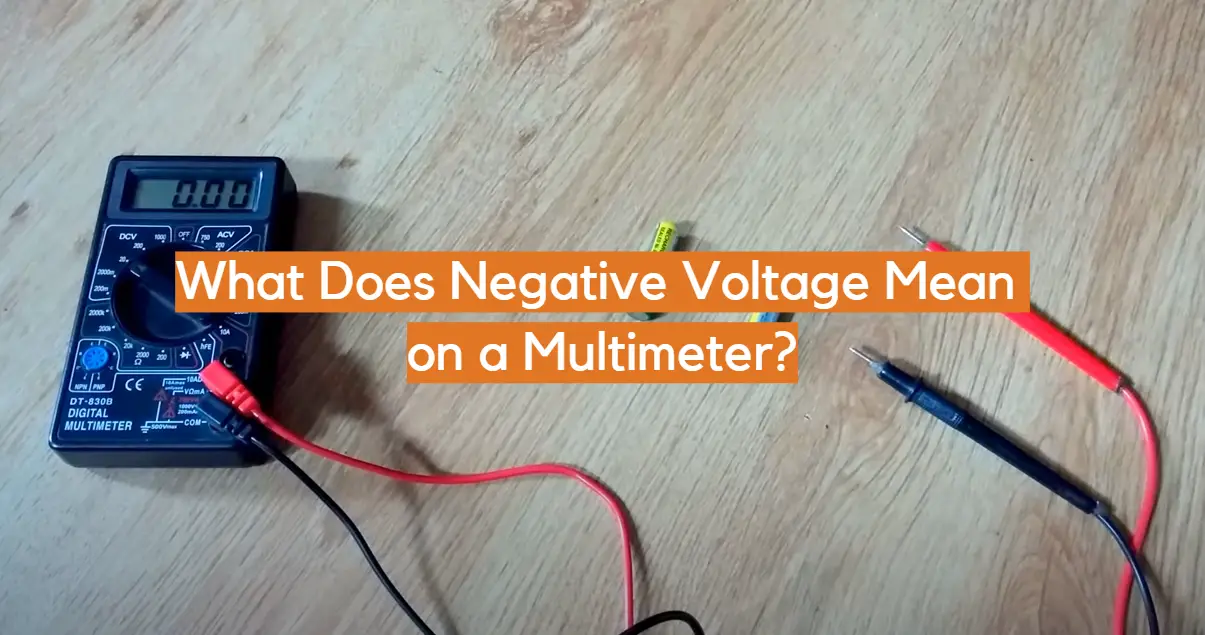








Leave a Reply